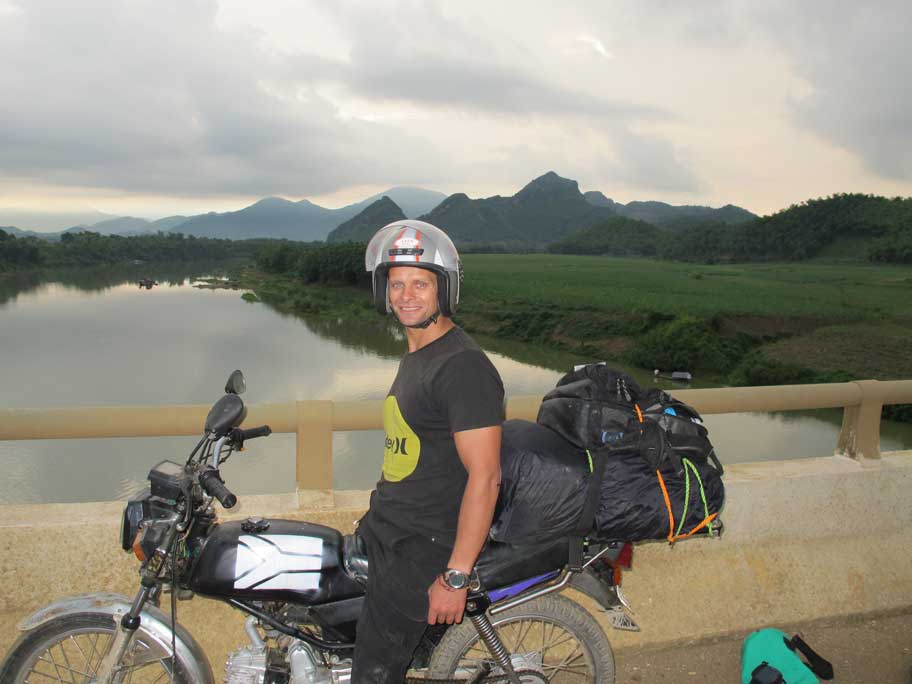On the Portuguese Camino coffee is never hard to find with a café on every street corner, even in small towns and villages. Drinking a café con leche while walking the Camino is one of the most fond memories most pilgrims treasure after walking the Camino. Like us, many pilgrims need their daily caffeine fix and this is a fantastic experience on the Camino Portuguese. The coffee here might be a bit different from your favorite local brew. In this article we take a look at Portuguese coffee and give some tips on how to order like a local!

Coffee in Portugal
For coffee enthusiasts exploring Portugal is a real treat. Similar to nearby Italy and Spain, espresso (expresso in Portuguese) is king. Sipping a café (espresso) at the local pastelaria is woven into the social fabric of Portugal and this is where locals get their morning caffeine fix. The strong coffee culture here is very different from any other country, more so if you are from North America, the UK or Australia. Coffee in Portugal is cheap, an expresso in a local coffee shop costs about 60c (EUR). Coffee is not a a problem when you work out the cost of the Camino de Santiago walk.
Pastelarias and Padarias in Portugal
The pastelarias (pastry shops) and padarias (bakeries) are the local coffee hangouts, making and serving all the local coffees, cakes, pastries and snacks. This is the center of the local community and I will recommend you try to get your caffeine fix here for a Portuguese coffee experience. Your barista will most likely not speak English here and you might find they only accept cash. Snackbars are another common coffee establishment that typically serves a variety of light meals, snacks, and beverages. In cities and touristy areas you might find specialty coffee shops selling Italian style coffees.


Coffee Drinks in Portugal
Portugal is one of very few countries that do not conform to Italian coffee lingo that dominates world-wide. Cappuccino, espressos and lattes are not the standard coffees sold at pastelarias (local coffee shops). Coffee drinks are different, you will fall in love with a galão, and be aware if you ask for a café you will get an espresso! To help you order the right coffee here is a brief explanation of the main coffee drinks commonly found in Portugal.
Portuguese Black Coffee Drinks
There are several different black coffee drinks available in Portugal, all are expresso based.
Café or Bica
There are multiple translations for espresso; expresso, café, and bica all mean espresso.
“Um café” translated “a coffee” is simply an espresso. A small, strong shot of coffee, in Portugal it is served in an espresso cup (a small demitasse cup). A shot of espresso is considered to be one (fluid) ounce (30 ml) all around the world. Um café is also called “uma bica”, the term bica is mostly used in the Lisbon area, but will be understood everywhere. It is said with a tongue in the cheek to be an acronym for “Bebo Isto Com Açugar” – Drink This With Sugar.
You can also ask for more or less coffee in the espresso cup.
Bica Curto (or just Curto) is a short espresso
Bica Cheio (or just Cheio) is larger espresso that fills the cup.


Abatanado
In Portugal a large black coffee is “um abatanado“, the term americano is also understood everywhere for a black coffee. The size of the coffee is smaller than you will get somewhere like McDonalds. Technically an abatanado and an americano is not the same. An americano is made by adding hot water to an Espresso in a larger cup. An abatanado in Portugal, is made like a normal espresso but allowing the larger cup to be completely filled, so it will be weaker than an espresso, but stronger than a traditional Americano. Extracting more coffee from the same volume of beans has an impact on the taste of the coffee (not positive). In a specialty coffee shop an americano and abatanado will be made in different ways. My experience is in most local coffee places like pastelarias you will always get an abatanado when you ask for an americano.
Café Duplo
“Um café duplo” is a double espresso.
Descafeinado
“Um descafeinado” is a decaffeinated espresso.
Carioca
A carioca is a second press espresso. Instead of replacing the coffee grounds in the machine, the same espresso grounds are pressed a second time, for a lighter flavor and strength. For me it is a bit sour because they over extract the coffee, but try it, maybe you will like it!




Stingy Nomads novelty T-shirts for coffee lovers on the Camino de Santiago. Order on Amazon.
Milk Coffees
Coffee with milk is very popular in Portugal and I have many friends that fell in love with um galão while in Portugal. The milk that’s typically used is full-fat (gordo) milk. At specialty coffee shops you might have some options for different kinds of milk and milk substitutes such as almond milk. At the traditional pastelaria there is usually only full-fat (sometime 50% fat) cow milk available.


Galão
Um galão, served in the iconic tall glass, this is a favorite for most visitors to Portugal. A small amount of espresso with a lot of milk, served hot in a tall glass. If you like a big milk coffee, this is the coffee for you. With a lot of milk it is not too strong. Um galão is similar to a flat white or latte.
Meia de Leite
Uma meia de leite (translated half milk) is half milk and half espresso, traditionally served in a ceramic cup that is larger than an espresso cup. Similar to a galão, but a bit smaller and slightly stronger.
Garoto
A mini galão served in a expresso cup. Garoto translates into “little kid”. Basically an espresso top up with milk (more milk than coffee).
Pingado
Pingado translate into a drop. Um Pingado is an espresso with a couple drops of milk. Similar to a macchiato.
A Bite to Eat
There are a variety of delicacies that are available at most local coffee establishments.


Sweet (Doce)
Pastel de Nata is definitely the most famous Portuguese delight, these little custard tarts with a flaky crust is a treat not to miss.
Bola de Berlim is a doughnut like fried pastry filled with egg cream, this very popular Portuguese sweet is often sold on the beach in summer. The salesmen walking on the Portuguese beaches with white cool boxes are usually not selling ice-cream, but bola de berlim!
Bolo de arroz is a delicious traditional Portuguese rice muffin with a spongy texture wrapped in a white parchment paper.


Savory (Salgados)
Tosta Mixta – A toasted ham and cheese sandwich. Usually in pastelarias and local eateries large slices of toast are used to make a big sandwich toasted crisply with a lot of butter. I love these!
Prego no Pão – A simple steak sandwich made with a soft white roll. The Portuguese bread is delicious and makes the Prego roll and bifana taste amazing!
Bifana – A sandwich made with thin slices of marinated pork in a white roll.


Portuguese Coffee
Coffee is not grown in Europe, but imported and roasted and blended in various countries on the continent. If you are a coffee enthusiast you will taste, Portuguese coffee (roasted and blended in Portugal) taste very different from coffee roasted in most other countries. The reason is the variety of coffee bean used for production of Portuguese coffee. Coffee beans are mainly divided into two types, Arabica and Robusta. Arabica coffee beans are internationally considered to make coffee superior in taste. Robusta beans yield coffee with a stronger, harsher and more bitter and rubbery taste. Robusta beans are cheaper and are mainly used for making instant coffee. I was very surprised when I moved to Portugal and all the beans on the supermarket shelf was a blend of 50% Arabica and 50% Robusta beans! Arabica beans are harder to cultivate with very specific growth conditions such as high altitude required. Robusta does not need high elevations and is widely grown in Asia. Check on the Portuguese coffee packs and you will likely see the origin of a part of the beans being Vietnam, a big producer of Robusta beans for the instant coffee market. Apparently in the 1800´s during a long period of economic isolation only Robusta beans were readily available to Portugal and a palate for the Robusta beans developed. If you like espresso’s (like most Portuguese people do!) you might love the strong, bitter Biccas mostly drank in Portugal.
Coffee in Spain
If you are walking any of the Camino Portuguese routes you will spend a lot of time walking in Spain and Portugal. The coffee in Spain is not the same as in Portugal. Below is a summary of the most popular coffees in Spain
Café con leche, the famous Spanish milk coffee is an espresso top with steamed milk in a coffee cup.
Café solo, an espresso
Café americano, a black coffee (espresso with water added)
Café cortado, small espresso with a drop of steamed milk


The strong half of Stingy Nomads, a nomadic aquaman that would be happy to spend all his life in the water diving, surfing and spearfishing but often has to compromise with Alya and go hiking instead. Campbell is responsible for all our marine adventures and following them with write-ups. He loves traveling, braai (BBQ in South Africa), red wine and spending the day in a wetsuit.




















